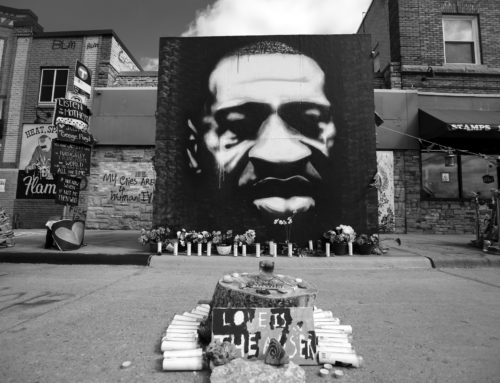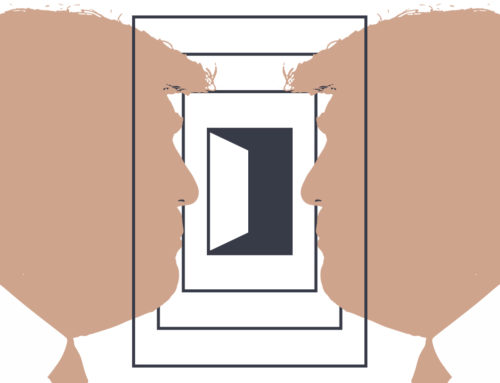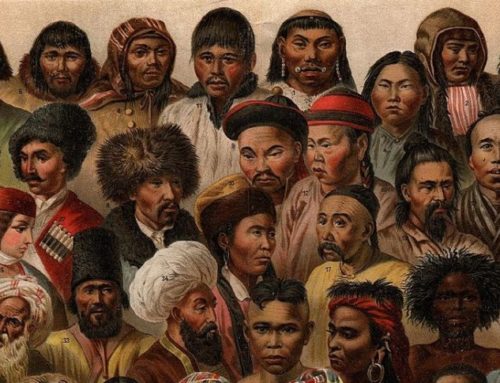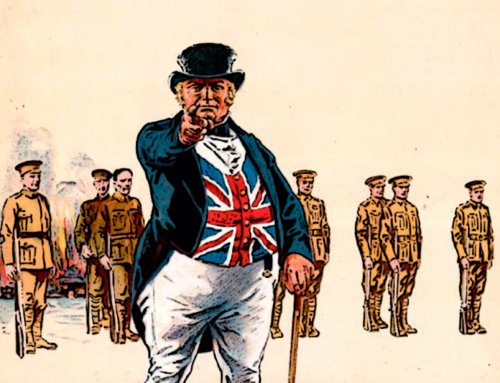By: Amar Khoday
Let’s give credit where credit is due. The United States Supreme Court did a tremendous thing for marriage equality in Obergefell v. Hodges.[1] It struck down state laws prohibiting same-sex marriage. In the words of United States federal appellate judge and legal scholar Richard A. Posner: “Prohibiting gay marriage is discrimination.”[2] The decision culminates years of litigation on the issue.
While I am delighted by the outcome of the decision, I am nevertheless going to be a bit of a downer here. Obergefell didn’t go far enough. How so?
A Missed Opportunity?
The majority’s decision is solely rooted in the right to marry under the Due Process Clause (as well as the Equal Protection Clause) of the Fourteenth Amendment.[3] This does not stop governments from engaging in other sexual orientation-based discrimination.
The Court missed an important opportunity to prohibit government-based discrimination on account of sexual orientation more broadly and irrespective of its connection to marriage. Accordingly, I argue that the Court should have embedded its holding in the Equal Protection Clause’s prohibitions on suspect or quasi-suspect classifications (developed in earlier case law).
The Decision
Justice Kennedy, who authored this landmark judgment (and indeed all of the Court’s major judgments on sexual orientation discrimination), begins by explaining for several pages the importance of marriage and its cultural roots. He then pivots to emphasize the Court’s jurisprudence concerning the right to marriage primarily under the Due Process Clause of the 14th Amendment. Drawing on the Court’s Substantive Due Process jurisprudence, Justice Kennedy highlights the recognition of the fundamental right to marry within the notion of liberty.[4]
Then, at roughly the 19th page of the slip opinion, Justice Kennedy commences his discussion of the Equal Protection Clause and its connection to the right to marry. He examines, amongst other cases, Loving v Virginia.[5] In Loving, a unanimous Supreme Court in 1967 headed by Chief Justice Earl Warren deemed unconstitutional a Virginia state law outlawing interracial marriages. It did so on equal protection grounds while also confirming that the statute violated the right to marry under the Due Process Clause.[6]
In drawing from Loving and other cases, Justice Kennedy observes “[t]he synergy between the two protections…” in connection with the right to marry.[7] He asserts:
It is now clear that the challenged laws burden the liberty of same-sex couples, and it must be further acknowledged that they abridge central precepts of equality. Here the marriage laws enforced by the respondents [the state governments] are in essence unequal: same-sex couples are denied all the benefits afforded to opposite-sex couples and are barred from exercising a fundamental right. Especially against a long history of disapproval of their relationships, this denial to same-sex couples of the right to marry works a grave and continuing harm. The imposition of this disability on gays and lesbians serves to disrespect and subordinate them. And the Equal Protection Clause, like the Due Process Clause, prohibits this unjustified infringement of the fundamental right to marry. [8]
He concludes by stating:
These considerations lead to the conclusion that the right to marry is a fundamental right inherent in the liberty of the person, and under the Due Process and Equal Protection Clauses of the Fourteenth Amendment couples of the same-sex may not be deprived of that right [to marry] and that liberty. The Court now holds that same-sex couples may exercise the fundamental right to marry. No longer may this liberty be denied to them.[9]
What appears clear from these passages is that both the Due Process and the Equal Protection Clauses are in play. But the focus is narrow. The decision fundamentally rests on protecting the liberty of the person with respect to the right to marry as it relates to both clauses.
Beyond this narrow (albeit significant, even profound) point, the decisions tells us little or nothing about whether governments can produce laws on the basis of sexual orientation (unconnected to marriage) without justifying it by articulating an exceedingly persuasive or compelling objective. Courts demand such a justification for laws that make distinctions on the basis or sex or gender, but Justice Kennedy avoids the question of whether sexual orientation should trigger the same level of review.
Equal Protection and Classifications
Over many years and cases, the Supreme Court has articulated that when the state employs certain classifications in formulating a rule, it will have to justify it under a particular level of scrutiny depending on the nature of the classification.
The Court’s most demanding standard is “strict scrutiny” where the state must demonstrate that the measures it employs are narrowly tailored to achieve a compelling government interest.[10] Strict scrutiny has applied to “suspect” classifications such as race, ethnicity or nation origins.[11]
A second category that the Supreme Court has developed is intermediate scrutiny.[12] This demands that a law must be substantially connected to an important state objective by the state demonstrating an exceedingly persuasive justification.[13] This level of scrutiny applies to sex and gender-based classifications.
The final and most flexible category relates to all other classifications (including traditionally, sexual orientation). Where governments use classifications concerning, for example, age, sexual orientation, or disability, governments need only demonstrate (to survive constitutional scrutiny) that the impugned rule is rationally related to a legitimate governmental purpose.[14] This is a pretty minimal standard in most cases. Though this level of scrutiny allows the greatest level of flexibility to the state to justify its rules or conduct, it is not without limits. The Supreme Court has indeed outlawed state legislation that discriminates on account of sexual orientation and has done so on the basis that it does not satisfy even rational basis scrutiny.[15]
Obergefell Revisited
So, returning to Obergefell, should the Supreme Court have solely rested its holding on the right to marriage rooted in the Equal Protection and Due Process Clauses of the 14th Amendment? Or, should it have gone even further by indicating that any classification based on sexual orientation be only justified either by showing an exceeding persuasive justification (intermediate scrutiny) or a compelling state interest (strict scrutiny)?
The Obergefell Court did not have to look far for guidance. The United States 2nd Circuit Federal Court of Appeals concluded in a 2012 case that sexual orientation was analogous to sex-based discrimination justifying intermediate scrutiny. Notably, however, this was in the Windsor case where the 2nd Circuit deemed the Defence of Marriage Act [DOMA] (passed by the United States Congress) to be unconstitutional.[16] The Supreme Court ultimately affirmed that decision, but did not rely on the 2nd Circuit’s intermediate scrutiny analysis. Justice Kennedy (also the author of the Windsor opinion at the Supreme Court), stated: “The federal statute [DOMA] is invalid, for no legitimate purpose overcomes the purpose and effect to disparage and to injure those whom [New York State], by its marriage laws, sought to protect in personhood and dignity.”[17]
As in Windsor, the Court in Obergefell missed an important opportunity to transform sexual orientation as a ground for discrimination into, at the very least, a quasi-suspect classification akin to sex or gender classifications, thus demanding intermediate scrutiny.
Justice Kennedy has rooted his Obergefell decision within the concept of dignity. This emphasis is undoubtedly important. But in keeping with this notion of dignity, it is also important to recognize that classifications based on sexual orientation, should, at the very least be justified, at least on the basis of an exceedingly persuasive justification regardless of their connection to the right to marriage.
Ultimately, while sexual minorities are finding greater acceptance (relative to previous decades, centuries, millennia), it is also abundantly clear that electoral majorities have the power to enact discriminatory laws that discriminate against vulnerable minorities. Notwithstanding some of the Obergefell dissenters’ recasting of this exercise in bigotry as part and parcel of some noble democratic process, this majoritarian power needs to be checked by the courts – and when they do so, it is surely not a threat to American democracy as Justice Antonin Scalia claims in his dissent.
Conclusion
Without a doubt, Obergefell is a profound decision and a substantial step forward for LGBT rights in the United States. It is one to be celebrated for those who support the cause of equality more broadly. Yet, for some if not many LGBT individuals, the issue of marriage has not necessarily been a central issue in their own lives; not everyone wants to marry. What is important, however, is that LGBT persons are also not hindered by discriminatory laws unconnected to marriage or the right to marry. To quote McGill law professor Robert Leckey, the Obergefell “judgment means that relying on marriage no longer discriminates based on sexual orientation. A question that remains relevant, however, is whether it’s fair for so much to turn on marital status.”[18]
There is still work to be done.
Amar Khoday is an assistant professor of law at the University of Manitoba. He is a member of the Massachusetts bar and Law Society of Upper Canada.
[1] Obergefell v Hodges, — S Ct —-, 2015 WL 2473451 (US).
[2] Richard A Posner, “The chief justice’s dissent is heartless” Slate (27 June 2015), online:http://www.slate.com/articles/news_and_politics/the_breakfast_table/features/2015/scotus_roundup/supreme_court_gay_marriage_john_roberts_dissent_in_obergefell_is_heartless.html
[3] US Constitution, 14th Amendment (stating: “All persons born or naturalized in the United States and subject to the jurisdiction thereof, are citizens of the United States and of the State wherein they reside. No State shall make or enforce any law which shall abridge the privileges or immunities of citizens of the United States; nor shall any State deprive any person of life, liberty, or property, without due process of law; nor deny to any person within its jurisdiction the equal protection of the laws” at s.1).
[4] The Supreme Court has recognized that the notion of due process includes not only the proper procedures that a government must follow before depriving someone of life, liberty or property (“procedural due process”). The notion of due process also extended to circumstances where government laws intruded on certain “substantive” rights (such as the right to marry or the right to privacy). See Planned Parenthood of Southeastern Pennsylvania v Casey, 505 US 833 at 846-847, 112 S Ct 2791 (1992); In such cases, the government needed to demonstrate that such measures were narrowly tailored to achieving a compelling state interest. For a broader discussion on the development and concept of strict scrutiny, see Adam Winkler, “Fatal in Theory and Strict in Fact: An Empirical Analysis of Strict Scrutiny in the Federal Courts” (2006) 59 Vanderbilt L Rev 793, online: http://papers.ssrn.com/sol3/papers.cfm?abstract_id=897360.
[5] Loving v Virginia, 388 US 1, 87 S Ct 1817 (1967) [Loving cited to US]
[6] Ibid at 11-13. It is the noteworthy that the Loving Court’s Equal Protection Clause analysis focused substantially on the use of racial classifications, rather than the right to marry – the focus of the Obergefell Court. The Loving Court stated: “There can be no question but that Virginia’s miscegenation statutes rest solely upon distinctions drawn according to race. The statutes proscribe generally accepted conduct if engaged in by members of different races. Over the years, this Court has consistently repudiated “[d]istinctions between citizens solely because of their ancestry” as being “odious to a free people whose institutions are founded upon the doctrine of equality.” The Court further observed: “At the very least, the Equal Protection Clause demands that racial classifications, especially suspect in criminal statutes, be subjected to the “most rigid scrutiny”. Ibid [citations omitted].
[7] Obergefell, supra note 1 at 17.
[8] Ibid at 19 [emphasis added].
[9] Ibid [emphasis added].
[10] See e.g. Johnson v California, 43 US 499, 125 S Ct 1141 (2005).
[11] Ibid. See also Hernandez v State of Texas, 347 US 475, 74 S Ct 667 (1954)
[12] US v Virginia, 518 US 515, 116 S Ct 2264 (1996).
[13] Ibid. at 532-3. The Court asserted: “To summarize the Court’s current directions for cases of official classification based on gender: Focusing on the differential treatment for denial of opportunity for which relief is sought, the reviewing court must determine whether the proffered justification is “exceedingly persuasive.” The burden of justification is demanding and it rests entirely on the State. The State must show at least that the [challenged] classification serves ‘important governmental objectives and that the discriminatory means employed’ are ‘substantially related to the achievement of those objectives.’” Ibid [citations omitted].
[14] City of Cleburne, Texas v Cleburne Living Center, 473 US 432 at 446, 105 S Ct 3249 (1985).
[15] Romer v Evans, 517 US 620 at 632, 116 S Ct 1620 (1996). The Supreme Court has also invalidated state laws that target the liberty interests of gay men and lesbians under rational basis scrutiny and further to the Due Process Clause of the 14th Amendment. Lawrence v Texas, 539 US 558, 123 S Ct 2472 (2003) (stating: “The Texas statute furthers no legitimate state interest which can justify its intrusion into the personal and private life of the individual” at 578).
[16] Windsor v United States, 699 F 3d 169 (2nd Cir, 2012) aff’d by United States v Windsor, 133 S Ct 2675, 186 L Ed 2d 808 (2013) [United States v Windsor cited to S Ct].
[17] United States v Windsor, ibid at 2696.
[18] Robert Leckey, “Gay marriage another step on the U.S. road to social justice” Globe and Mail (26 June 2015), online: http://www.theglobeandmail.com/globe-debate/gay-marriage-another-step-on-the-road-to-social-justice/article25139424/








Excellent article. I was thinking the same when I read the decision.
As someone said in the reddit thread, the SDP stuff the way Kennedy wrote it was sloppy. Roberts wouldn’t have been able to go through his lochner rant if Kennedy had brought up strict scrutiny and had actually done the work to go through the framework.
Indeed. Kennedy gave the dissenters every opportunity to seem brilliant. And that is no small feat when Roberts and Thomas are among them.
Yeah, but Kennedy would have had to also actually go through the “deeply rooted in our history and tradition” analysis or give a reasonably comprehensible explanation of what now counts as a fundamental right (with some real reason to turn aside Glucksberg besides “cuz”) in order to prevent the Roberts dissent.
I agree, but if you kinda sorta squint one eye and read into what he’s saying, I think you could argue that by citing Turner, Zablocki, and Loving he was defining the right in a more general sense than a pure Glucksberg application might require.
Thus, some of his flowery language about the importance of marriage would serve to show the “deeply rooted” prong. Technically I believe the level of abstraction at which a fundamental right should be defined was still up in the air between all of the justices (can’t remember the last case where they argued over it, but I know we read it in law school.)
But even if that’s where he was going, I agree that he needed to be more explicit about what exactly he was doing with Glucksberg.
On June 26th, in an article in the New Yorker, Jeffrey Toobin summarized his take on the U.S. Supreme Court’s decision in Obergefell v. Hodges as follows:
“Ultimately, though, the case is pretty simple.
The government confers a bundle of rights on individuals who choose to marry. The constitution’s guarantee of equal protection forbids any state from withholding those rights from the class of people who happen to be gay. End of story.
As it turns out, this argument is difficult to refute.”
Except that it is not nearly so simple. Nor is it so difficult to refute.
The government does indeed confer certain rights to those who choose to marry. It does not, however, confer those rights to individuals who do not choose to marry. As Amar Khoday points out, in this excellent article on the judgement, that is already an exercise in inequality.
As it is put in this article, a “question that remains relevant… is whether it’s fair for so much to turn on marital status”. Taking the same issue in a different direction, the dissenters in the case, to whom Toobin gives short, very short shrift, reminded us that answering the question also requires some definition of marriage, which is not for the Court to assert.
The question was, ultimately, whether gay people can marry each other (for they could always and often did marry heterosexuals) or whether the states can prohibit them from doing so. It was not, as Toobin put it, whether those rights can be withheld from the class of people who happen to be gay.
Jeffrey Toobin makes a lot out of the case of Loving v. Virginia, presumably in order to make the reader feel like laws against gay marriage are as obviously appalling as laws against interracial marriage. And maybe they are, but that just isn’t the point. The analogy between the cases is terribly misleading for the following reason: Loving v. Virginia did not require any change to the definition of marriage as a union between man and woman.
Personally, I take the general view of the dissenters here, to the extent that this matter should have been left to the legislative branch and not to the Court. It is disturbing to me that the Constitution, the very body of laws which establish that Court, should have been so ignored by the majority in this case.
Mr. Khoday thinks that the Court did not go far enough, I think that it went far too far. Still, I am grateful for this article – the author’s appraisal of the decision is intelligent and clear – and he does not try to oversimplify a difficult problem. Whether our primary concern here is that more needs to be done for LGBT rights in the United States or that the integrity of the rule of law must be defended, we need to understand the actual challenges at hand.
I think that b_cardozo incorrectly attributed the quotation of Robert Leckey to Amar Khoday, the author of this article. A minor point.
It is absolutely unfair that so much should rely on marital status. What has been won by this decision is the right for the majority of gay people to be discriminated against equally along with all the other people in the United States who are not married.
Why do you say that the majority “ignored” the constitution? Read through Mr. Khoday’s article again. Do you not think that the Due Process and Equal Protection Clauses of the Fourteenth Amendment are part of the constitution?
You might argue that the judgement was not reasonably derived from these clauses, but you would have to make that argument. Either way, the constitution was not ignored here.
Obergefell, the Freedom Bell
Is tolling now for thee –
Instead of having just one spouse,
You’ll soon be bound to three.
I pretty much agree. Writing was on the wall that the Court was going to legalize gay marriage, but I was wondering if they would take the next step to make it a suspect or quasi-suspect class.
Kennedy did leave a breadcrumb in the opinion when said being gay was an immutable characteristic.
What do you make of that?
Well, there’s one big problem with using “immutable” as a standard. Namely, that sexual orientation does sometimes change.
For example, some people find themselves originally attracted to men, then later change to be attracted to women:
http://www.midus.wisc.edu/findings/pdfs/1153.pdf
http://www.mygenes.co.nz/PDFs/Ch12.pdf
So it isn’t an immutable characteristic in the sense of something that never changes? But it also doesn’t seem possible to change via external intervention (“pray the gay away” type quackery). Is “only changes on its own” the equivalent of “immutable”?
I’m sure there’s an interesting philosophical debate to be had on that point. But legally speaking, immutable characteristics aren’t simply things you can’t change. E.g. religion–people can convert to new religions, but it’s still considered an immutable characteristic.
Sexual orientation seems a lot more immutable than religion, so I think Kennedy is right on the money with that line.
Surely sexual orientation is a great deal more fluid than either conservatives or liberals want to acknowledge at this point. There are probably many people, gay or straight, for whom it is fixed, but there are many others for whom it changes over time. I would also argue that the number of cases which seem fixed would diminish significantly under varying circumstances. Just one such set of circumstances is a highly permissive society. This is to say nothing of experimentation and mistakes. Half or more of heterosexual marriages are mistakes, if we are to take our bearing from divorce statistics.
Regardless, if marriage is a fundamental right that cannot be denied to people based on sexual orientation, then why can’t sexuality just be taken out of the question entirely? I live with my grandfather and take care of him – why can’t we receive the same rights as other couples?
Wildbill76 is mistakenly erasing bisexuals which is a much better description of his hypothetical “fluidity” group that he claims we will discover in the future. Bisexuals are certainly more likely to re-label their sexuality when the marry or enter into long term relationships (almost always heterosexual) but this does not mean they underlying oreintation changes.
I didn’t say anything about discovering a group in the future. I said that I believed sexuality now to be more fluid than people generally admit or even realize. And I think it’s always been that way.
The study cited showed that the vast majority of “changes” in sexual orientation went from heterosexual to bisexual/homosexual or bisexual to homosexual, although there were a few cases in women of bisexual to heterosexual. The phrasing of your statement that “some people find themselves originally attracted to men then later attracted to women”is misleading because it implies that your generic category of people included gay/bi men who later became attracted to women. However, that study and virtually every high quality quantitative study show that the movement of any such “changes” is almost exclusively in one direction – towards homosexuality. While it is impossible to be certain in these large quantitative surveys (these are anonymous and there was no follow up for further clarification), the obvious answer is that many men come out later in life for various reasons but rarely ever does he describe it as a “shift” in underlying sexual orientation but that he knew from an early age and was closeted. Of course, these surveys are documenting generations in flux as public attitudes towards sexuality have changed drastically. In the future, I would expect much fewer gay men marrying and staying in the closet and these purported “shifts” later in life will become a rarer phenomenon. Finally, the mygenes.co.nz website is run by a notorious fundamentalist christian reparative therapistm who has no credibility.
I need to to thank you for this very good read!! I certainly loved every little bit of it. I have you book marked to look at new things you post…
Because the correct result is so obvious, one is tempted to speculate that the majority has purposefully taken the contrary position to create the circuit split regarding the legality of same-sex marriage that could prompt a grant of certiorari by the Supreme Court and an end to the uncertainty of status and the interstate chaos that the current discrepancy in state laws threatens.